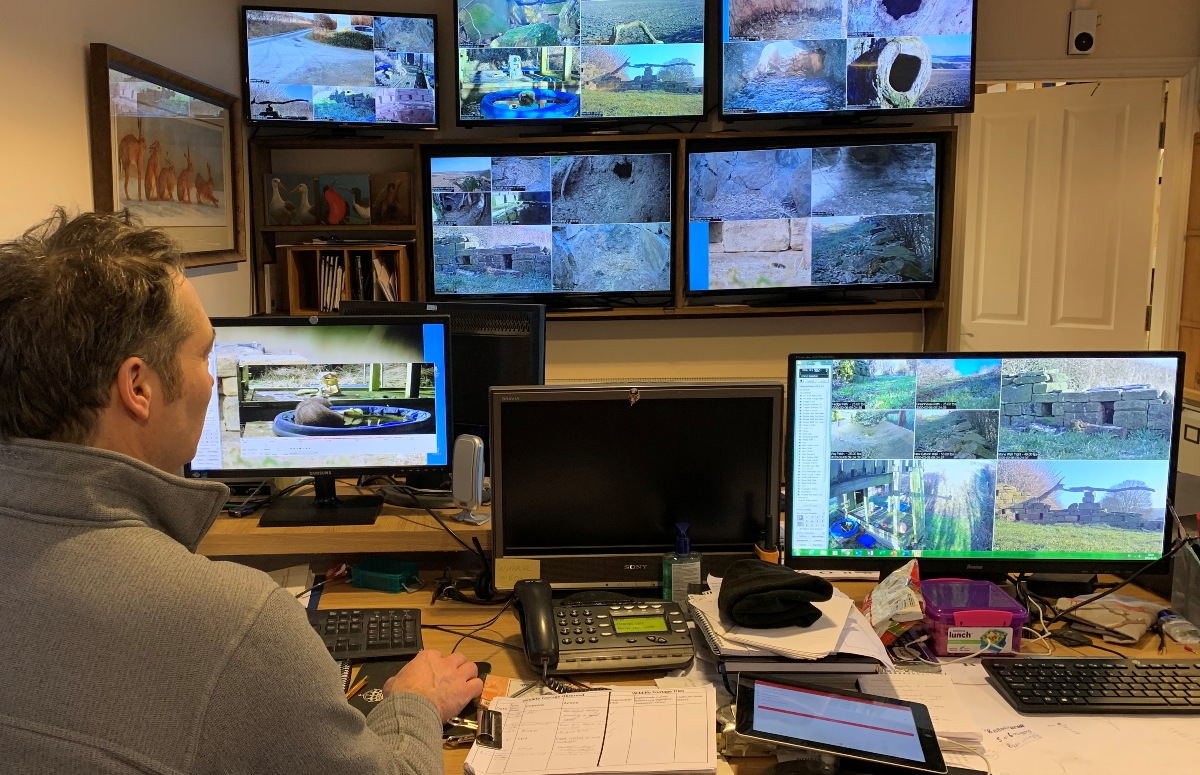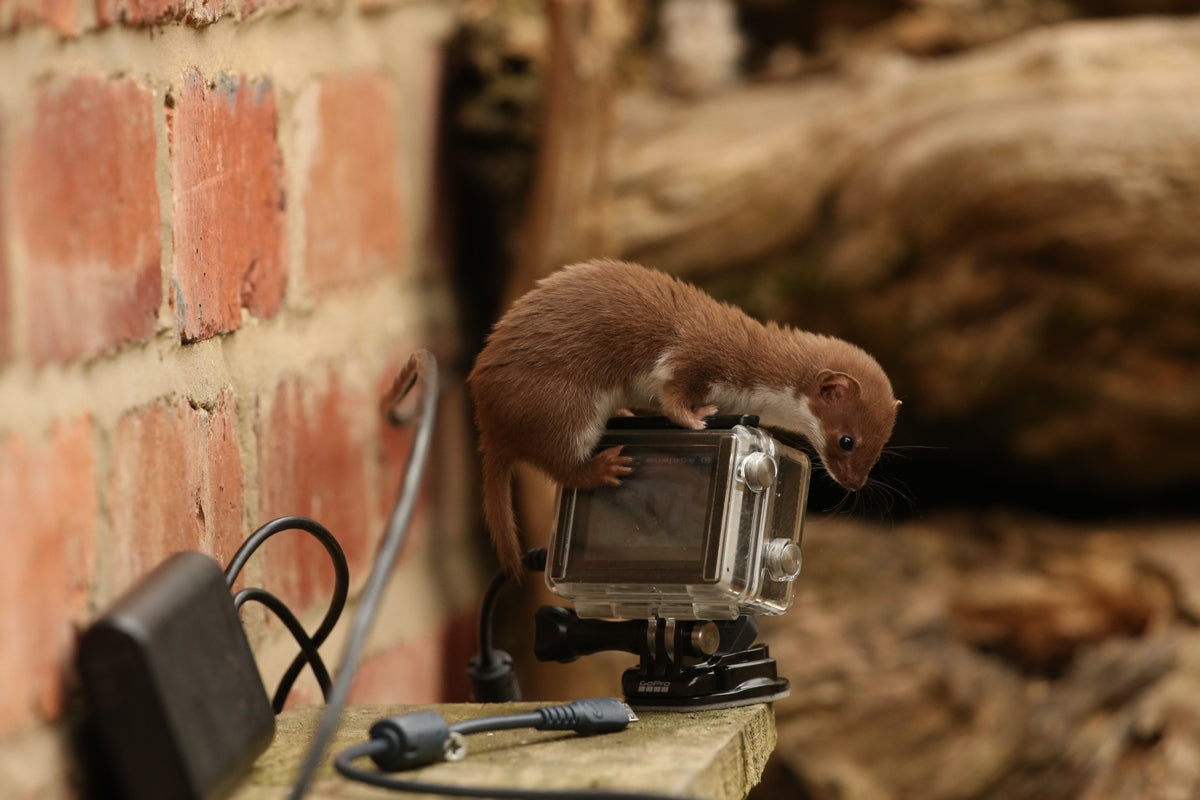For US readers: In my blogs, a weasel refers to your ‘least weasel’ and stoat is your ‘short-tailed weasel’. For more on ID and definitions: CLICK HERE


Building Stoat City | The Foundations
The project began in 2014 after I discovered a family of stoats in the garden. I wanted to keep them here so that I could film and photograph them for my paintings and so the first thing I did was leave out bait to keep them in the garden long enough to watch them. This worked and it wasn't long before I was getting great photographs. But the more I saw the more I wanted to learn about these fascinating mammals and I was hooked. I built small wooden feeding chambers and dug them underground so that stoats could take food safely, away from the owls and other predators in my garden. Inside these, I hid cameras so I could watch what happened when they discovered the food. It wasn't long before I added nesting chambers to these habitats, in the hope that the stoats would breed here.

 Before long I had a network of cables crisscrossing my garden as they led to and from these stoat habitats and my house, where I had a bank of screens to watch the action. I added cameras along regular stoat-runs in the garden and placed more cameras outside the entrances to each nest box so that I had every area covered. I also dug a number of small ponds for the stoats to drink, and as it turned out, swim in (I discovered to my surprise that stoats love water and often swam laps of the ponds just for fun). And to crown it all, I built an underground tunnel so I could reach my hide and watch the stoats without being detected.
Before long I had a network of cables crisscrossing my garden as they led to and from these stoat habitats and my house, where I had a bank of screens to watch the action. I added cameras along regular stoat-runs in the garden and placed more cameras outside the entrances to each nest box so that I had every area covered. I also dug a number of small ponds for the stoats to drink, and as it turned out, swim in (I discovered to my surprise that stoats love water and often swam laps of the ponds just for fun). And to crown it all, I built an underground tunnel so I could reach my hide and watch the stoats without being detected.
Adding a new nest site
In 2015, I added a new, bigger nest to this habitat with a reflection pond outside its entrance. My intention was to photograph the stoats against this attractive backdrop and use my photographic studies for a new painting and it was so successful it became the first of three. Made from an old water trough, I named this new nest 'Stoat Trough' and added five new cameras overlooking it. The trough is located in a valley 100 yards from the house and proved popular with the stoats - so far they had raised three litters here.


Building the gabion wall
I also made a new habitat close to a ha-ha wall which borders my garden and just 30m from the house. I chose to locate this new habitat here after discovering the young stoats liked to hide among the rocks. The ha-ha is structural. It keeps the garden soil from slipping down the valley and is made out of heavy rocks held in metal cages, stacked on top of one another. This structure is known as a gabion wall. The habitat I built nestled up to this stone wall. Inside, I placed hand-made feeding boxes, each with cameras hidden inside them. I also hid some cameras underground in the adjoining meadow and placed others I high up on branches and in hollow logs overlooking the wall. It took about three months to complete this new habitat and unfortunately its construction frightened Bandita; the ermine stoat that eventually starred in the TV documentary. I persevered with the project because I wanted the habitat ready in time for the breeding season.


A delay to the build threatens the plan
Then in March a cold weather front arrived here direct from the arctic. Dubbed the ‘Beast from the East’, the storm raged for more than a week with devastating effects on Yorkshire’s wildlife. The biting arctic winds and drifting snow were the most extreme I had seen here. The house was completely cut off by seven-foot drifts. Luckily Bandita continued to come every night for food. It was fascinating to at last be able to track her movements via the criss-cross of prints visible in the snow each morning.
The bad weather put all the building work on hold, but as soon as the weather abated we got straight back to work. We spread fine mesh over the gabion wall to stop the stoats from sneaking into it and making a home wherever they liked. I wanted them to use my bespoke habitat instead, where I would then be able to watch them on the cameras. In the end, Bandita, the stoat mum featured in the TV documentary, did find a way through a part of the gabion wall that did not have mesh on it and gave birth to her kits in there.
A new nest inside the wall
Inside the habitat I created a network of tunnels out of plastic and terracotta piping. These were designed to replicate a stoat’s natural habitat. The tunnels led to an industrial-sized wheelie bin buried in the middle of this 12 tonne structure. By the end I had a 16 metre-long drystone wall in front of and rising above the gabion wall. Inside the wheelie bin was a bespoke stoat nest, complete with underfloor heating, lighting, three cameras and microphones. This was a real five star 'des res'. Every angle was covered inside and out with 10 cameras to trace any movement. But despite the luxury, Bandita only used this for a brief period during the filming of the documentary and has used it once since then!
Building Weasel Town
Around the same time Stoat City was under construction, a visitor to my gallery spotted a weasel in my back garden. Excited by the opportunity to study two of the world’s most secretive carnivores right on my doorstep, I turned this part of my garden into a ‘weasel town’, dotted with wooden boxes and equipped with the latest surveillance technology. I baited the boxes with dead mice and voles. Weasels and stoats are rival relatives and a stoat will kill a weasel given the chance, but I was confident that there was enough distance between the two. Just to be sure, I made the entrance holes to the weasel’s living quarters no bigger than 32mm – too small for a stoat to break in and enter.

Before long I added reflection pools and upgraded my nesting chambers so that they too had heating mats inside.










3 comments
I accidentally destroyed a weasel habitat when I tore down our decrepit woodshed. Now I’d like to rebuild (or assemble) something for them. Do you have some advice for how to approach this? It sounds like you had varying success with the weasels adapting to your built habitats.
[…] How a weasel wonderland I built in my garden became a TV set in nature […]
[…] Click here to read about how I built a ‘stoat city’ in order to film stoats in my garden… […]